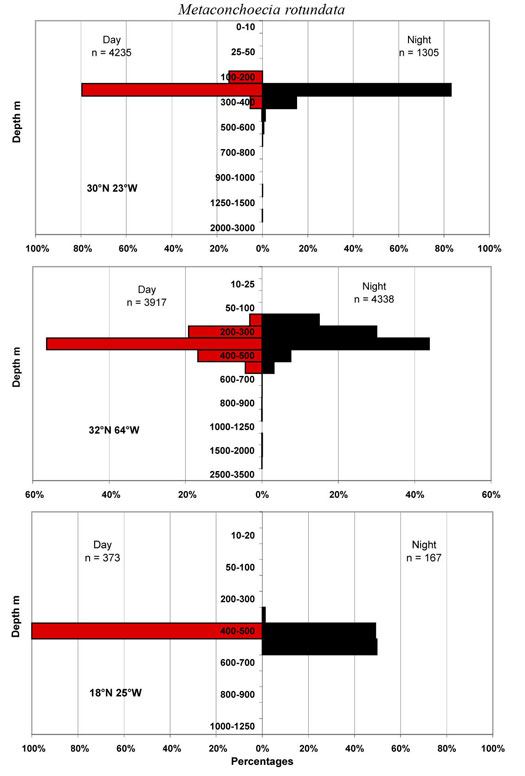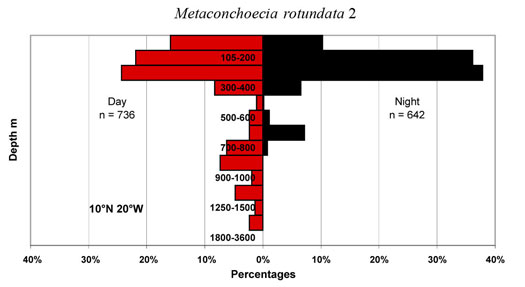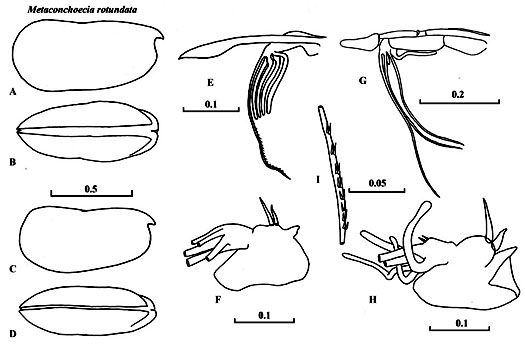Atlas of Atlantic Ostracods
Taxon details
Metaconchoecia rotundata (Müller, G.W., 1890)
- Order:
- MYODOCOPA
- Suborder:
- Halocypridina
- Family:
- Halocyprididae
- Subfamily:
- Conchoecinae
- Size range (females):
- 0.7-0.8 mm
- Size range (males):
- 0.7-0.9 mm
- Depth:
- mesopelagic
Notes
205 records
When Müller (1891) first described this species from the Mediterranean, he stated there were two size forms. Iles (1953) analysing samples from the Benguela Current split what he considered to be C. rotundata into C. teretivalvata (short form) and C. skogsbergi (long form). Iles used Skogsberg’s (1920) description of C. skogsbergi from the Southern Ocean as the type description of the long form, but failed to designate type localities for either species, presumably believing they should be somewhere in the Mediterranean. Poulsen (1973) classified all Muller’s (1906) ‘rotundata group’ species in Granata and Caporiacco’s (1949) genus Metaconchoecia. When Gooday (1981) revised what he termed the ‘skogsbergi complex’, he concluded that Iles’s species C. teretivalvata differed from Müller’s original description of specimens from the Mediterranean. He retained the name rotundata for the Atlantic specimens that he considered that best matched the size and shape of Müller’s original descriptions. Kempf (1986) subsequently designated Müller’s C. rotundata as the type for the genus Metaconchoecia. Chavtur and Angel are revising the genus Metaconchoecia, establishing a new tribe Metaconchoeciinae that will include ten genera, nine of them new. The distribution map shows that the known range of rotundata is 46°N to 50°S, but it is generally less abundant at latitudes >30°. It occurs in all oceans although there are few records from the Pacific. The bathymetric profiles show that it is a shallow epipelagic species with a bathymetric range of 50-500m; its apparent presence at deeper depths at 10°N is probably the result of misidentifications.
| Bermuda | n | Mean mm | s.d. | Range mm |
|---|---|---|---|---|
| Female | 199 | 0.79 | 0.024 | 0.74-0.84 |
| Male | 216 | 0.79 | 0.026 | 0.72-0.86 |
| A-1 | ||||
| A-2 |
| NEA | n | Mean mm | s.d. | Range mm |
|---|---|---|---|---|
| Female | 200 | 0.78 | 0.021 | 0.72-0.84 |
| Male | 312 | 0.77 | 0.020 | 0.72-0.84 |
| A-1 | 165 | 0.66 | 0.016 | 0.62-0.70 |
| A-2 |




